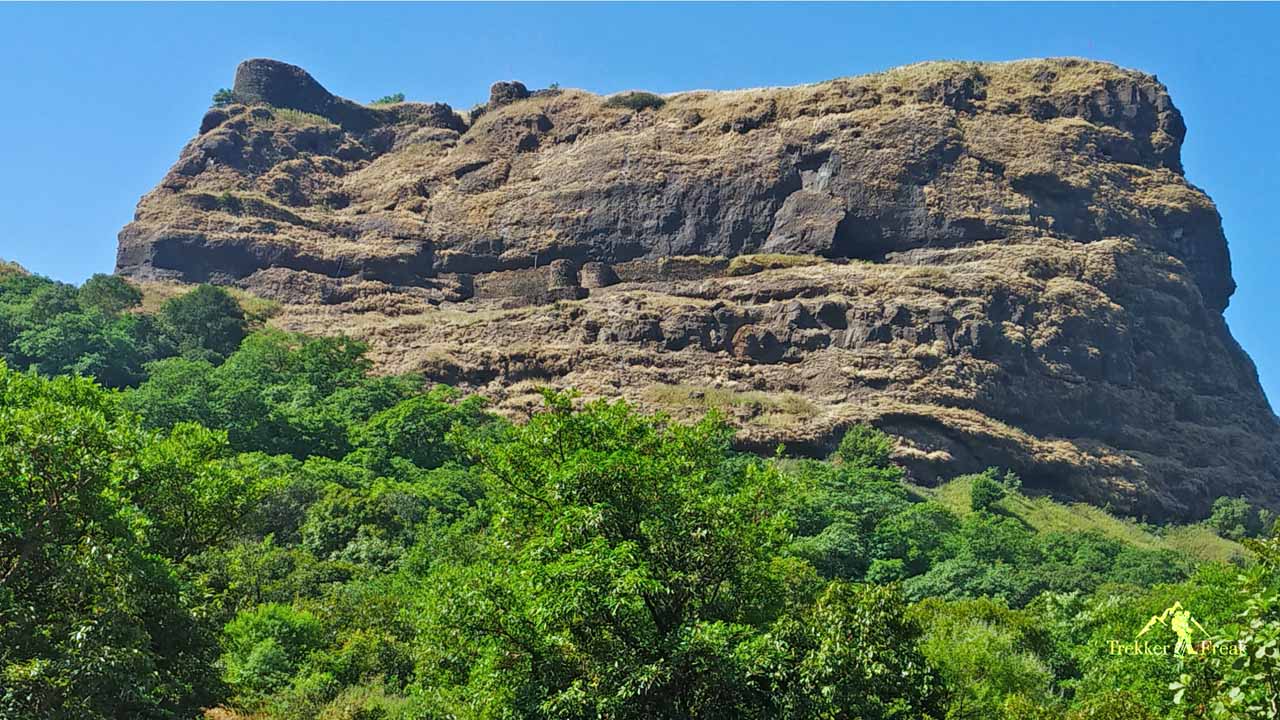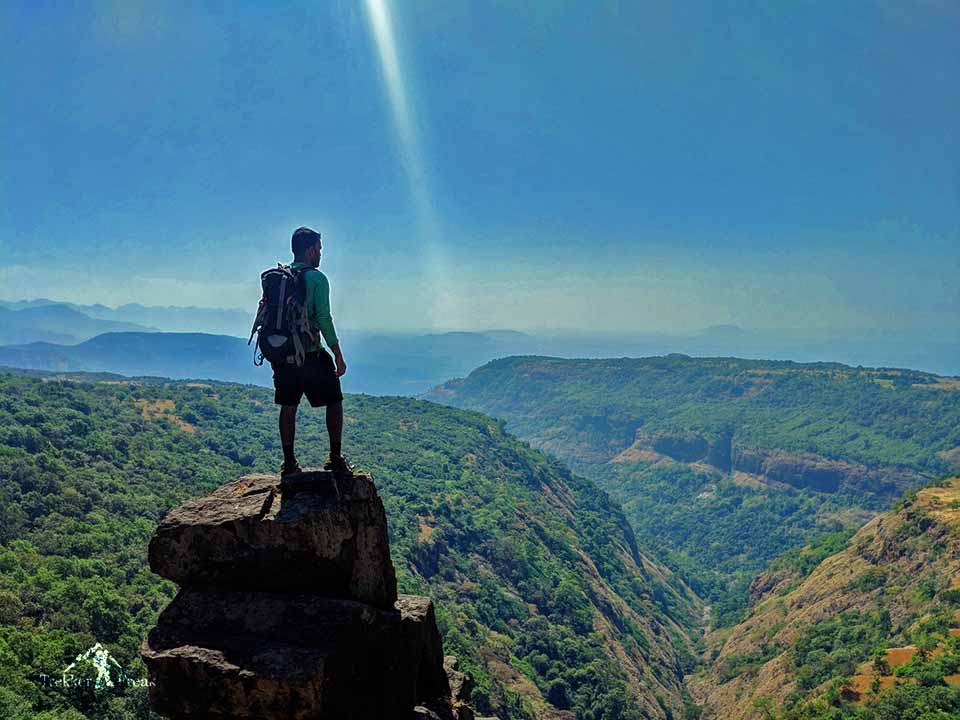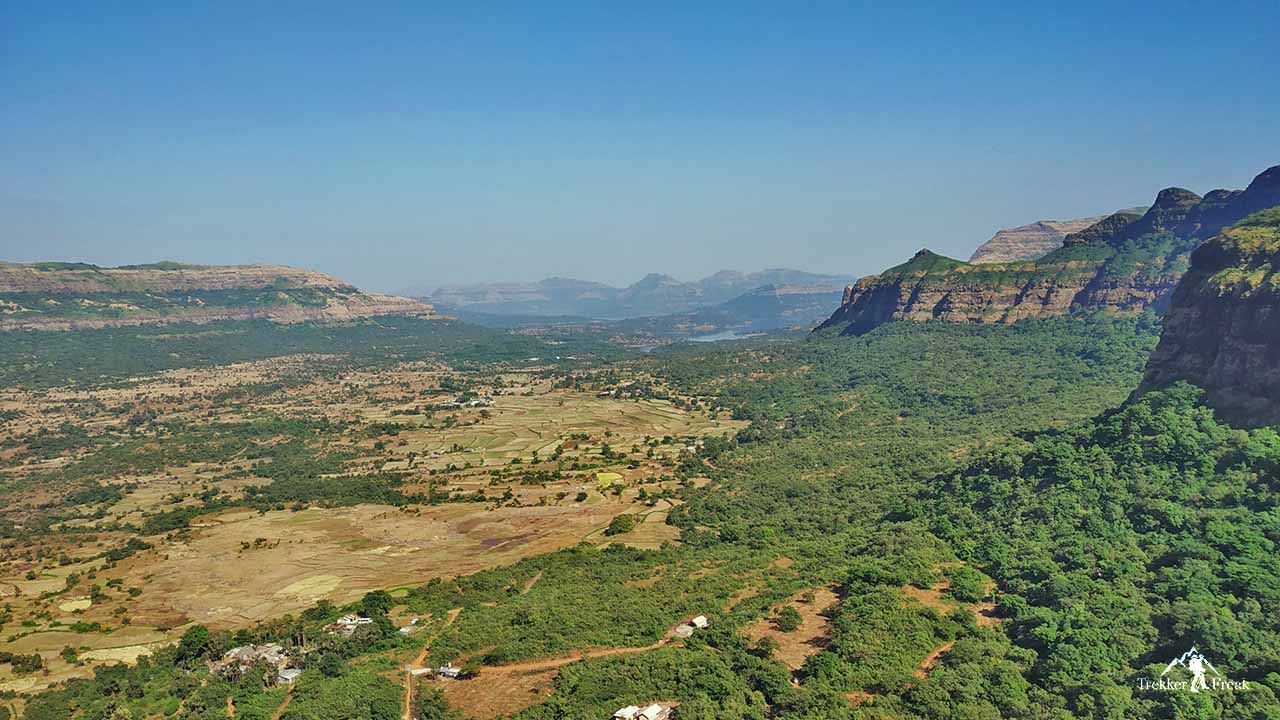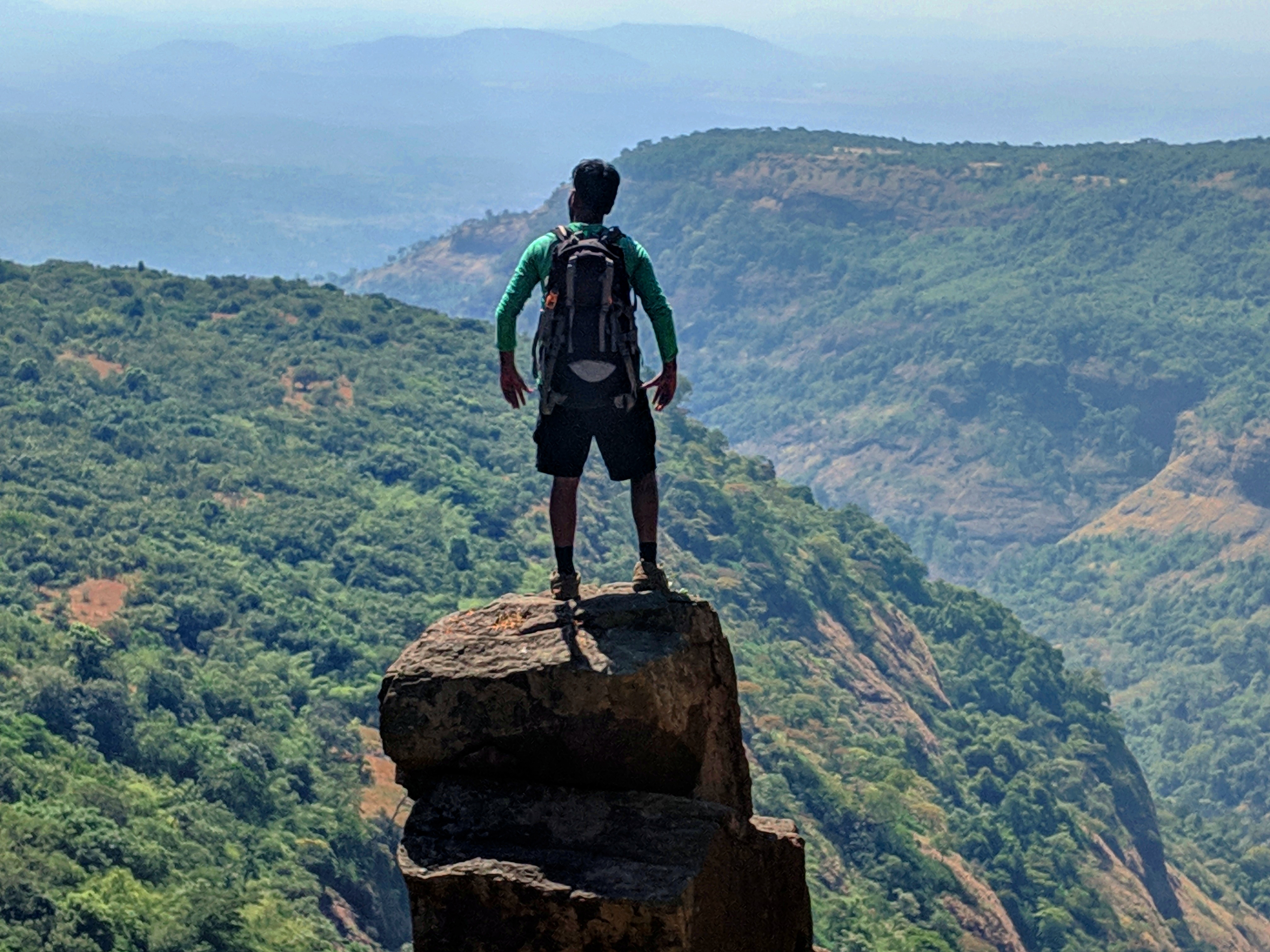Ghangad Fort is located in Lonavala region in Mulshi Taluka in Pune district of Maharashtra, India. The Ghangad fort is part of Sahyadri (Western Ghats) Hill Range and an important fort in Pune district. There are so many famous forts in Lonavala region like Lohagad, Visapur, Korigad, Tikona and Tung.

Base Village : Ekole Village
Elevation/Height: 3000ft.
Grade level: Easy
Endurance level: Easy
Best Time to Visit: June to March
Time Required to Reach the Top: About 1 hour


Ghangad Fort Information
Ghangad fort is situated in heart of Tamhini Ghat. Ghangad fort is surrounded by Tailbaila, Korigad, Sudhagad and Sarasgad but still lonely and separated. This fort was under the Great Maratha Empire till 1818. This fort was surrendered to British forces after the fall of Korigad on March 17, 1818. This fort was used for keeping prisoners.

More than a Fort, Ghangad was used as watchtower to keep watch on trade route from Pune to Konkan. Ghangad Fort is continuation of Sudhagad Fort range. Ghangad fort offers great view of Tailbaila, Sudhagad, Sarasgad and Backwaters of Mulshi Lake.

Ghangad Fort Trek Route
Ghangad Fort Trek route is simple and well-marked till the top. Ghangad Fort Trek begins from small plateau and goes through dense forest. After half an hour trek and we will reach at Garjai Devi Temple. There are two Tower of Lamps near Garjai devi temple.


Now, we come across a diversion, Left from here goes to small Cave and Right will take you to Main Entrance Gate of Ghangad Fort. There is one huge rock separated from main mountain and inclined on the wall of Ghangad Fort. This huge rock is just after the main entrance gate. There is a small temple of Goddess Mahishasura Mardini.


There is an iron ladder which was placed by Shivaji Trail Group. Initially there were stone made steps which destroyed by British after capturing the fort in 1818. This iron ladder is about 15ft. Just after the iron ladder there is Water tank. Water is not in good condition to use for drinking purpose. After iron ladder, trail becomes rocky and steep. Now we have to go through final entrance gate to reach the top. There is nothing to see on the top of Ghangad Fort except awesome 360 view of Sahyadri mountain range.


Please Keep the Nature Clean and Green
Things to See on Ghangad Fort Trek:
- View of Sudhagad, Tamhini Ghat, Tail Baila and Sarasgad.
- Garjai Devi Temple
- Main Entrance Gate
- Multiple Water Tanks
- Goddess Mahishasura Mardini Temple
- Ekole Valley and Savashincha Ghat
- Multiple Small Caves
- Mulshi Lake
Camping / Accommodation Facility: Ghangad Fort has very small area on top. There is small plateau near cave and This plateau is the best place for Camping. However, one can also stay in Goddess Garjai Devi Temple as well small Cave.
Food / Water Facility: Food and Water Facility are available in Bhamburde as well as Ekole Village. There are Multiple water tanks on Ghangad Fort but water is not potable/drinkable. Carry enough water with you.
How to reach Ghangad Fort
Ghangad Fort can be reached via Lonavala railway station. There is bus from Lonavala to Bhamburde village at 9.00 am. From Bhamburde village, we have to walk almost 2km to reach Ekole village which is the base village.
Bus Time Table : There are only two ST buses plays between Lonavala and Bhamburde village.
1) Lonavala to Bhamburder village: 9.00am, 12.30pm
2) Bhamburder village to Lonavala: Last bus from Bhamburde Village to Lonavala is at 2.30pm. Don’t miss this bus as there are no transports available after this bus.
Places to Visit near Ghangad Fort:
- Tail Baila
- Korigad Fort
- Sudhagad Fort
- Sarasgad Fort
- Tamhini Ghat

Hello. magnificent job. I did not anticipate this. This is a fantastic story. Thanks!
This is a good tip particularly to those new to the blogosphere.
Short but very precise information… Thanks for sharing this one.
A must read article!
Im thankful for the blog post.Really thank you! Really Cool.
I got this website from my friend who told me
about this web page and at the moment this time I am browsing this
website and reading very informative posts
here.